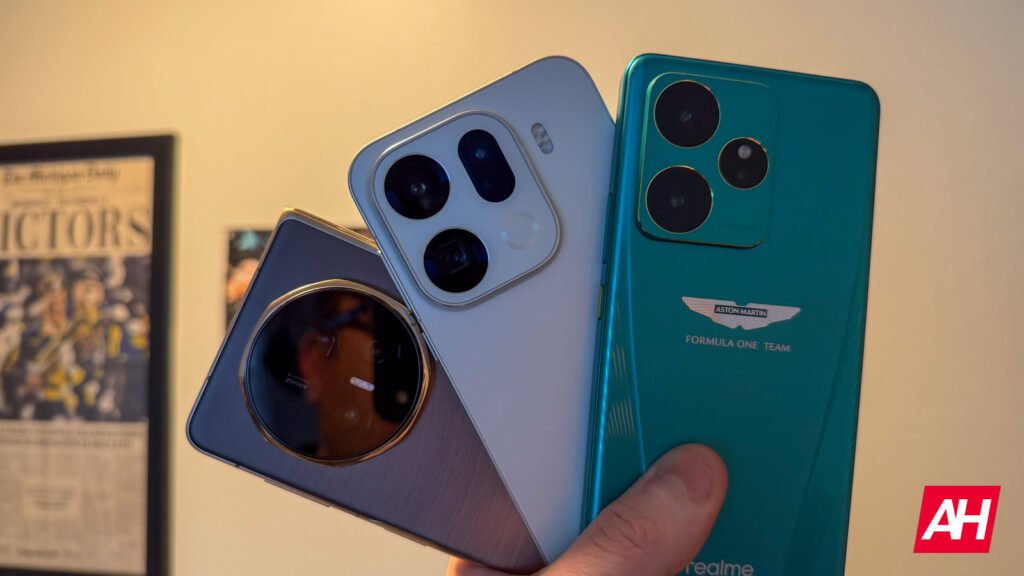

Here in the US, we’re pretty limited on what phones we can buy. We’re mostly stuck with Samsung or Apple. There are a few options from Google, Motorola and OnePlus as well, but for the most part its Samsung and Apple. They both make good phones, but when you get the chance to play with some phones available in other regions – like the new Find X9 Pro from OPPO – it really makes you realize how far the US government has overstepped.
As a phone reviewer for the past 13 years, I’ve had the chance to review hundreds, actually probably thousands of phones. Many of which are not available in the US. While it’s true, we do get OnePlus devices here in the US, which is mostly the same as what OPPO launches, it’s not entirely the same. And that’s especially true for the OPPO Find X9 Pro and OnePlus 15 – OnePlus doesn’t even have Hasselblad anymore.
Whenever I use some of these phones, I really want to switch to them full-time, but then I remember that they won’t work fully on the US networks. If you do have T-Mobile, it’ll work mostly on their network. But you’ll miss out on features like VoLTE, WiFi Calling and more. And if you’re in an area where T-Mobile already has spotty service and uses a band that the phone doesn’t have, you won’t have service.
What does the US government have to do with limiting smartphone players?
It’s not all on the government; a big part of why these Chinese companies don’t sell here is the carriers. Which I’ll touch on in a bit.
But, back in 2019, the US banned Huawei. Not only did they ban Huawei from selling in the US, they also could not work with US companies. That meant they couldn’t use Qualcomm chips, they couldn’t use Microsoft Windows on their laptops, nor use Android on their phones. They also struggled to make their own chips because they couldn’t work with ARM (despite not being an American company).
This really set Huawei back, but because of how large they are, and their resources, they were able to weather the storm. And now they’re back like they never left. Their Kirin chips are still pretty far behind the competition, however. But they do have some of the best cameras on the market.
Now, Huawei is very paranoid about doing anything related to the US or even Europe, for the fear of being sanctioned even harder. Because of this, they sold off HONOR, though we can still tell they have a heavy influence in that company. They also don’t invite US media to a lot of events. I was able to go to one last year, but it was really hard to make that happen.
Other Chinese companies, such as OPPO, Vivo, and Xiaomi, have seen this happen and are now not looking at the US at all. Surprisingly, though, they do have a presence in Mexico, but not the US and Canada.

The graph above is from Statcounter, showing market share in Mexico. You’ll notice that Xiaomi and OPPO are both listed here at around 10% market share. Of course, Samsung is a big chunk here, which is the case in most countries.
Carriers control the market
Unfortunately, in the US the majority of buyers go to their carrier and buy a new phone. Instead of buying unlocked, like is the case in Asia and Europe. Carriers in fact, will give you discounts for buying through them, versus unlocked – the complete opposite versus Europe.
And because of that, if you are not selling your phone on a carrier, you’re not going to sell very many. OnePlus and ZTE’s Nubia are prime examples of this. Now OnePlus is available in more places, and available in Best Buy stores, but you can’t get it from T-Mobile, AT&T or Verizon. Which greatly affects how many units they will sell.
A big reason why OnePlus doesn’t sell on carriers is the cost, which then gets passed down to the customer. Many years ago, their phone was on T-Mobile for several hundred dollars more than directly from OnePlus. That was a very bad look, since the phone was identical.
Some OEMs are working to make buying unlocked more feasable and attractive, like Samsung. Who offers more colors of their phones through their website, cutting out retailers and carriers. But to get a major chunk of Americans to buy unlocked, that won’t happen for quite some time.
American’s need more choice
Choice is always good for consumers. It also drives innovation and competition. Looking at the US smartphone landscape, it’s pretty boring. Actually, it’s incredibly boring. Most phones look the exact same every year, with nothing more than a processor upgrade.
Meanwhile, looking at Europe with things like the vivo X300 Pro, OPPO Find X9 Pro and the Xiaomi 17 Pro/Pro Max, those are some pretty big upgrades in almost every area.
Just imagine walking into a Verizon store and seeing the vivo X300 Pro, OPPO Find X9 Pro, Samsung Galaxy S25 Ultra, and iPhone 17 Pro Max on display. How many do you think would still choose Samsung or Apple? Likely quite a few, because of the brand recognition, but people would be interested in the vivo and OPPO, especially seeing the specs.
The government needs to stay out of what companies can sell in the US, and carriers need to make it easier to use unlocked phones here. Then, we might be able to get some of these more interesting devices.
The post Why the Best Android Phones Never Make It to America appeared first on Android Headlines.